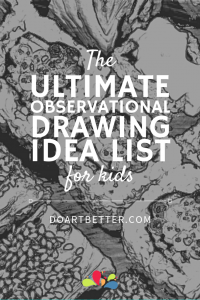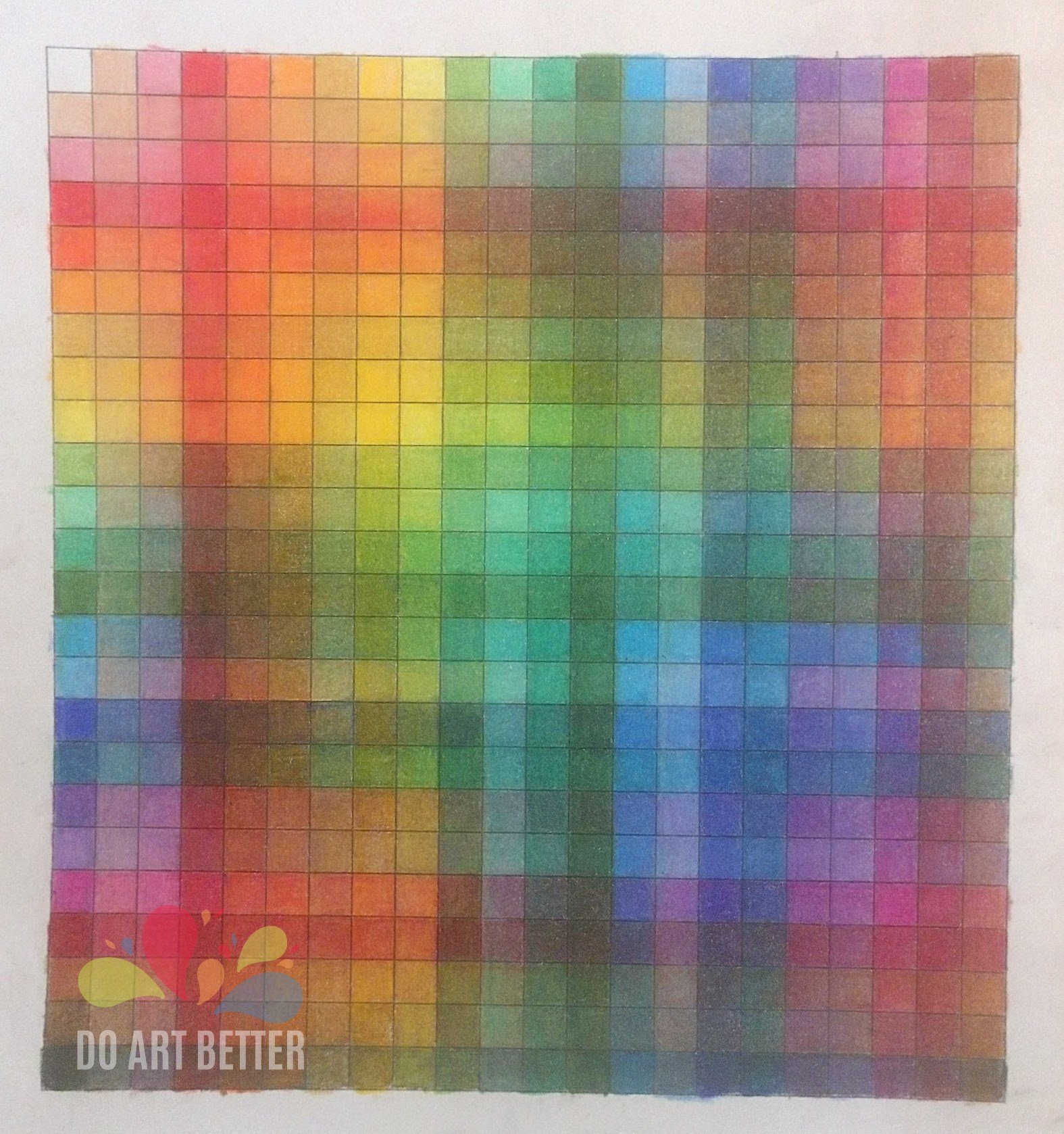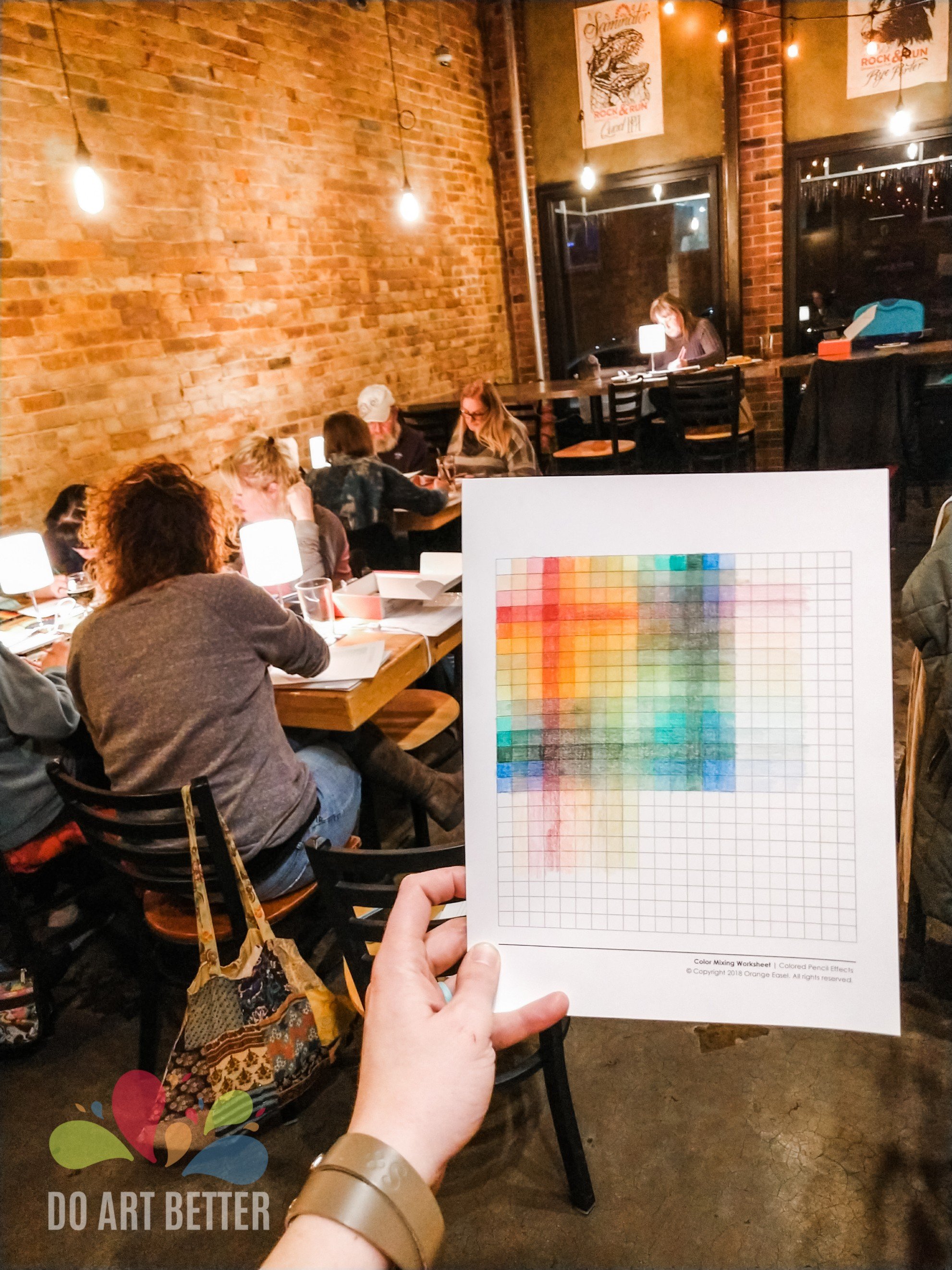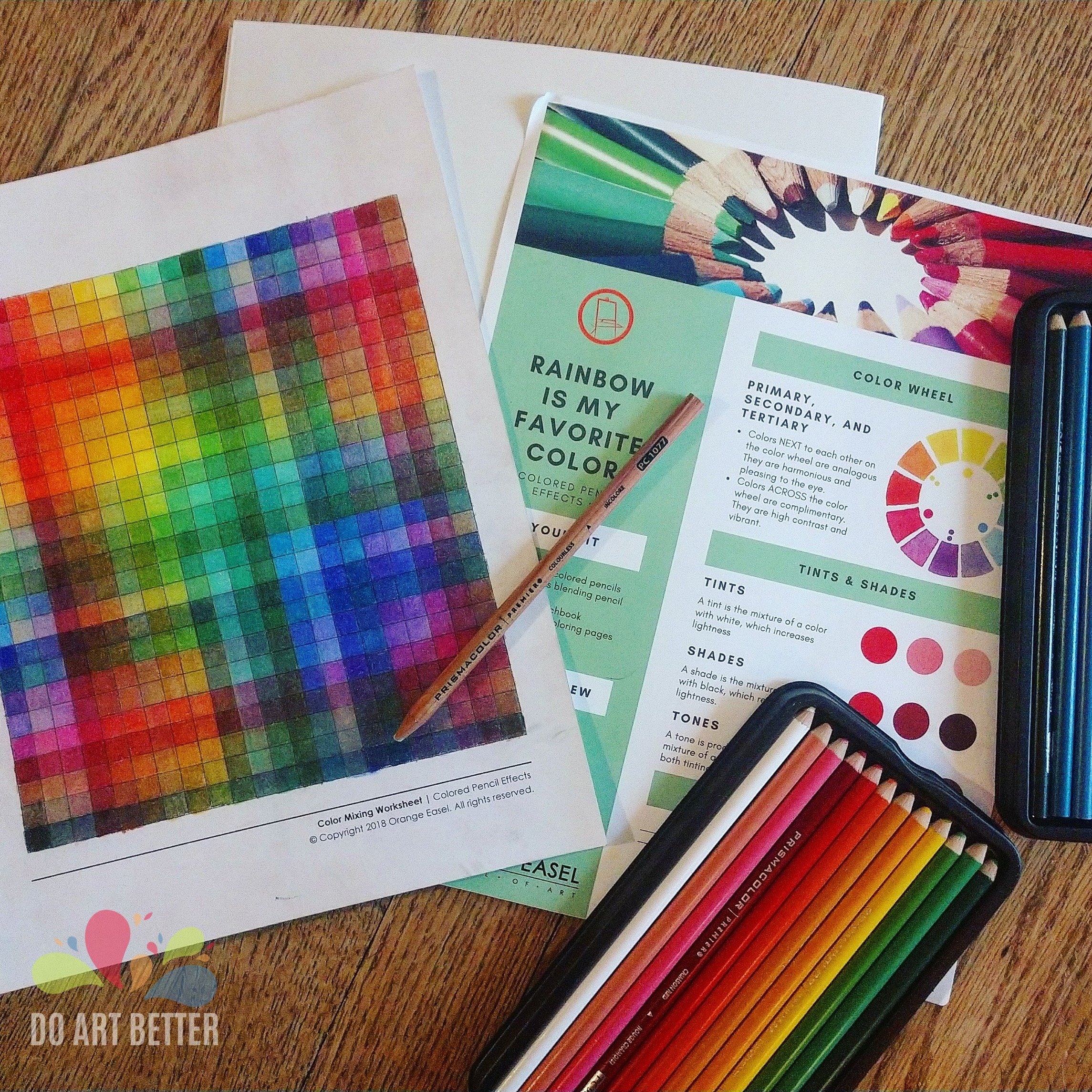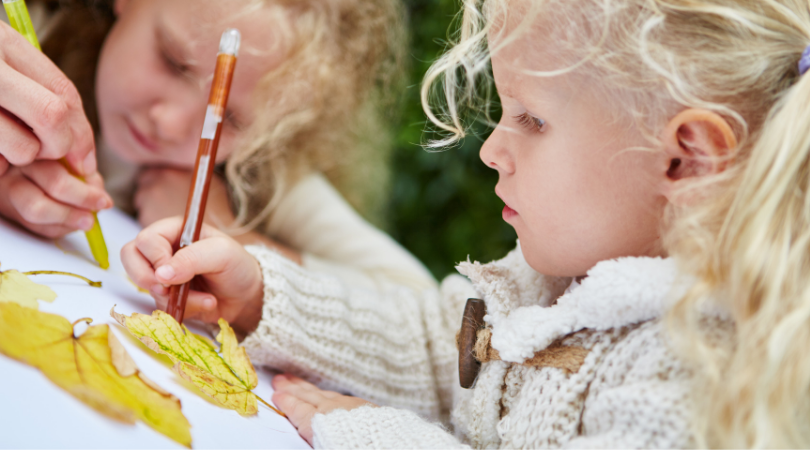The biggest complaint we hear from students is that observational drawing is boring. So, to beat the boredom, I’ve put together the ultimate observational drawing idea list for kids.
This post contains affiliate links.
The Purpose of Observational Drawing
Observational drawing is an incredibly valuable practice for young artists. It trains our eye and our hands to work together.
Keep in mind, the purpose of observational drawing is the process of drawing. PERIOD. The goal is not to create a winning composition. It’s not to create a beautiful piece of artwork to hang on the wall. Or to draw perfectly. It’s not even necessary to FINISH the drawing.
How do you know if you did it right? Well, if you looked at something and then put a pencil (or pen) to paper to try to replicate it, then you did it right. It’s that simple.
Observational Drawing Tips
Beyond simply doing your best to replicate something on paper, here are my best tips from years of experience in the studio:
- Manage your expectations – it’s not always going to be pretty, and that’s okay.
- Short 5-10 minute drawing is plenty of time – you don’t have to finish it
- Draw something you find interesting to look at
- Spend more time looking at the object than you do at your paper/drawing
- Draw without an eraser – seriously, try it.
- For younger artists, attention to details is the first goal. Don’t worry about scale or perspective yet.
- Breath and enjoy the act of drawing
Contemporary Subjects for Observational Drawing
Hobbies and Activities
- musical instrument that you play
- baseball / glove
- basketball / shoes / netting
- football / mouth guard/cleats
- soccer ball / shin guards/cleats
- collection of art supplies
- chess board
- deck of cards
- tap / ballet shoes
- camera
- bicycle
- skateboard
- drums
- fishing poles
- fishing lures
Technology
- cell phone / charger
- video game controller / console
- drone
- laptop
- earbuds or headphones
- computer keyboard
- mother board
Entertainment and Media
- magazine cover
- book cover
- stack of your favorite books
- board game in progress
- video game cover
Clothing
- baseball cap
- athletic shoes
- cowbow boots
- sunglasses
- favorite hoodie
Food and Drink
- after school snacks
- fast food meal
- favorite donut
- coffee shop drink & pastry
- favorite movie candy
- inside of citrus fruit
- sushi rolls
- pizza slices
- favorite kind of donut
- soda can / bottle
- popcorn
- banana peel
- chocolate bar and wrapper
- birthday cake / cupcake
- pack of gum
- chocolate chip cookies
- fortune cookie
- jelly beans
- ice cubes
- s’mores
- watermelon
- waffles
Living Things
- fish in a bowl
- roly-poly bugs
- mini succulents
- caterpillars
- insect specimens
- lizards / snakes / other reptiles
- nightcrawlers
- lady bugs
- lighting bugs
- hermit crabs
Everyday Objects
- coins and bills
- jewelry
- keys
- cosmetics
- crumpled up paper
- nuts and bolts
- origami folded paper
- legos or other blocks
- favorite teddy bear or stuffed animal
- marbles
- ticket stub
- scented candle
- paper airplane
- pet bowls, toys, or accessories
- car/vehicle dashboard
- school backpack
- balloon animals
- piggy bank
Natural Objects
- peacock feather
- autumn leaves
- acorns
- campfire
- wood slices
- animal bones
- seashells
- dandalions
- the moon / night sky
- rocks / pebbles
- geodes
- pinecones
- whirly-birds
- spider webs
- tadpoles
Self
- non-dominant hand
- dominant hand
- close-up of one eye
- self portrait
- your shadow
- lost tooth
Holidays
- jack-o-lantern
- halloween candy haul
- presents / gifts
- favorite ornament
- Christmas tree
- tree topper
- nutcracker
- candy cane
- elf on the shelf
- gingerbread cookies
- nativity figurines
- noise makers
- conversation heart candies
- box of chocolates
- shamrocks / clovers
- Easter eggs
- baby chicks
- Easter lilies
- chocolate bunny
- peeps (candy)
- fireworks
Make It Interesting: Perspective and Viewpoint
Encourage your artists to change their view point to make their drawings more interesting.
Birds Eye View
A top shop like this one is a really common perspective that we see in contemporary still life photos on social media, especially Instagram.
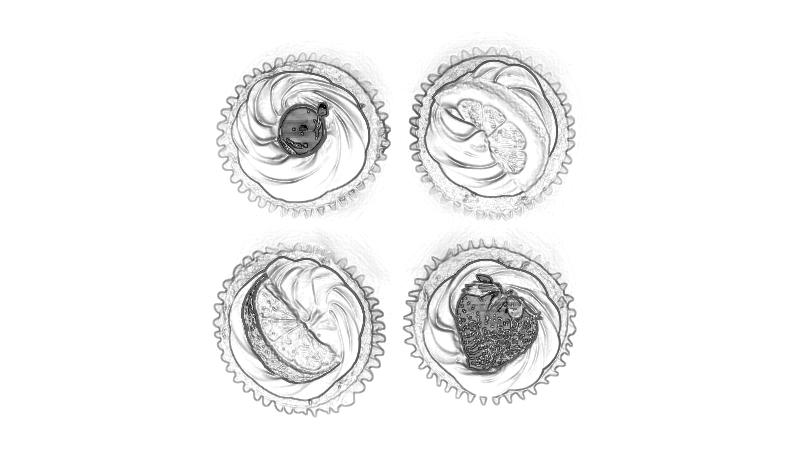
Low Angle Observations
Getting your eyes low on your subject (1) magnifies the smaller object to look lifesize, and (2) changes the background of your composition.
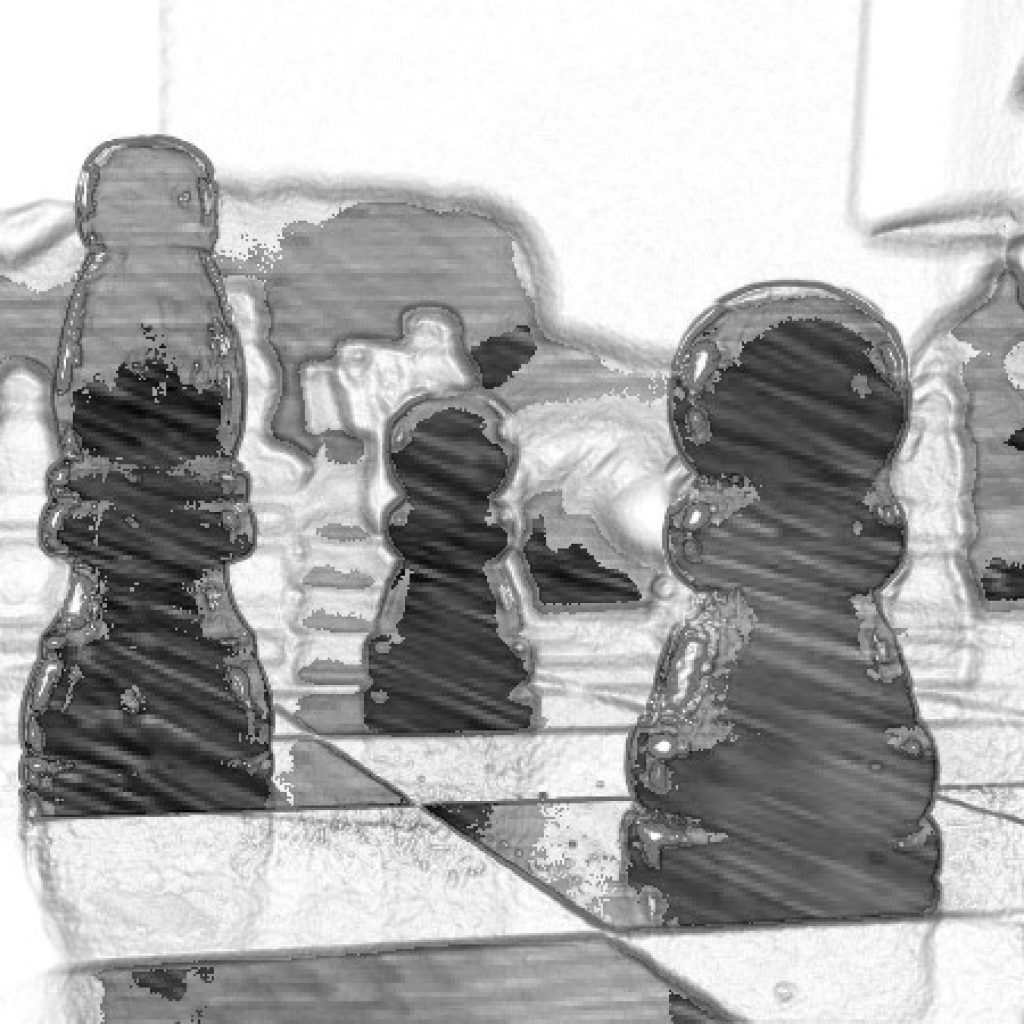
Close-up and close cropped drawings
Draw your object so that it fills the entire page and leaves very little background.
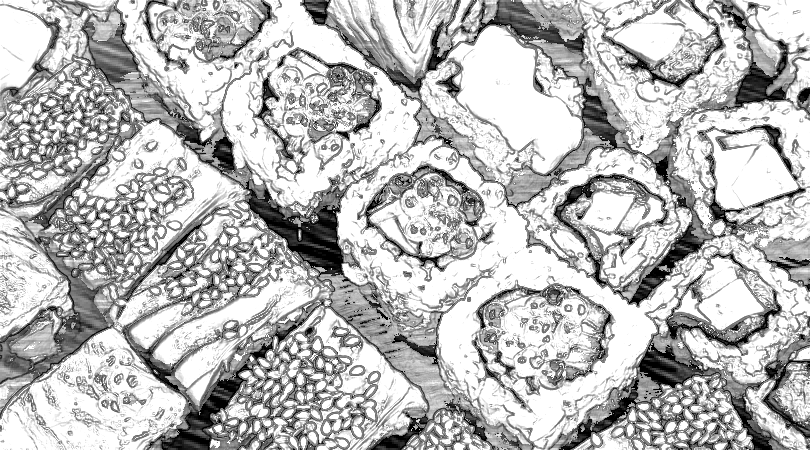
Use a Viewfinder to help you draw
A viewfinder is a tool used by artists to help narrow in on a subject. It creates a frame for the artist to see a two-dimensional composition in a three-dimensional world. It’s the same term we use to describe the window on a camera.
In my next post, I’ll show you my favorite viewfinder the best way to use this tool!
Well, what do you think? What am I missing from my “ultimate” observational drawing idea list for kids these days? Let me know in the comments and I’ll get it added!
Pin this list for later:
